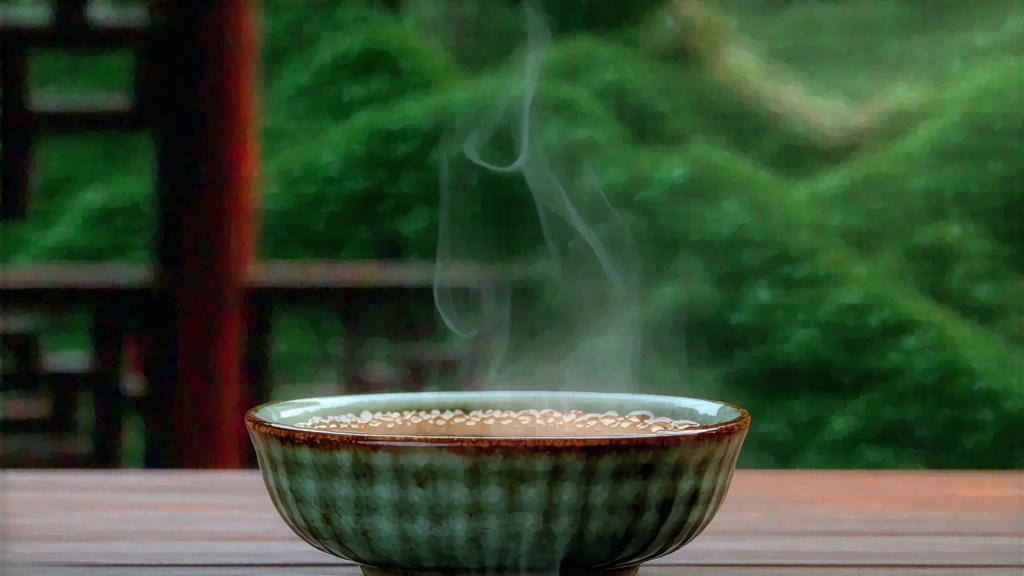
If green tea is China’s garden sprite and pu-erh its venerable sage, then Da Hong Pao—Big Red Robe—stands as the martial hero of Chinese oolong: poised, powerful, cloaked in legend, and capable of commanding prices higher than gold. Grown on the vertiginous basalt cliffs of northern Fujian’s Wuyi Mountains, this tea is celebrated for its “rock rhyme” (yan yun), a mineral cadence that lingers between palate and memory long after the cup is empty. For international drinkers accustomed to the bright grassiness of Japanese sencha or the malt of Assam, Da Hong Pao offers a sensory detour into a landscape where fire, stone, and time collaborate in every leaf.
Historical romance enshrouds the cultivar. The most oft-told tale dates to the Ming dynasty, when a scholar on his way to the imperial exams fell gravely ill at the foot of Wuyi’s Nine-Dragon Gorge. Monks from the nearby Tian Xin temple brewed leaves plucked from six ancient bushes clinging to the cliff; the scholar revived, passed the exams with top honors, and returned in gratitude draped in the crimson silk robe of imperial honor. He draped the robe over the bushes, proclaiming, “Your virtue saved me; may this red robe shield you for eternity.” Whether apocryphal or not, the name stuck, and so did the imperial prestige: Qing-era records list “Da Hong Pao tribute tea” among gifts reserved for the Dragon Throne itself.
Botanically, Da Hong Pao is not a single plant but a collective identity. The original “mother trees,” six gnarled bushes estimated at 350 years old, still perch on a ledge above the Jiu Long Ke (Nine-Dragon Nest) ravine. Since 2006 they have been legally protected from plucking; the last harvest, a mere 20 grams, fetched US $30,000 at auction. Today’s market relies on three lineages:
- Qi Dan – cuttings directly propagated from the mother trees, preserving their genetic fingerprint.
- Bei Dou #1 – a 1950s laboratory attempt to graft mother-tree scions onto hardier rootstock.
- Commercial blends – skillful marriages of selected Wuyi cultivars such as Rou Gui, Shui Xian, and Tie Luo Han, crafted to echo the mother tree’s profile when genuine Qi Dan is scarce.
Terroir is the first alchemist. The Wuyi range is a UNESCO geopark where subtropical humidity collides with mineral-rich volcanic tuff. Day-night temperature swings of 15 °C force the leaves to thicken their cell walls, concentrating aromatic oils while imbibing the limestone’s flinty calcium. Frequent mist filters sunlight into a soft, diffused glow, slowing photosynthesis and boosting theanine, the amino acid behind the cultivar’s signature sweetness. Locals speak of “three cliffs and two streams” as the holy quadrant: leaves that grow within sight of Hui Yuan, Liu Xiang, and Fo Guo cliffs, watered by the Nine-Dragon and Flowing-Fragrance streams, are said to possess the truest yan yun.
Craftsmanship is the second alchemist. Da Hong Pao undergoes the most labor-intensive protocol in the oolong universe, a fifteen-step ballet that stretches across 24 hours. Picking begins at dawn during the brief spring window when two leaves and a bud reach 60 % open-face oxidation. The pluckers work barefoot on bamboo scaffolds lashed to the cliff; every basket is lowered by rope to avoid bruising. Withering follows on rattan trays set in the mountain breeze, alternating between sun-wilt and shade-rest to coax moisture out without “cooking” the leaf. Once the edges turn parchment-brown, the leaves are shaken in rattan drums—a motion called yao qing that bruises the margins while keeping the veins intact. This partial rupture sets up the unique 30–40 % oxidation level that places Da Hong Pao midway between green and black tea.
Next comes the kill-green, a 280 °C tumble in iron pans for exactly 87 seconds; one heartbeat too long and the mineral notes collapse into flat toast. Rolling is done in linen bundles twisted by foot pressure, a technique that extricates stem juices and binds them to the leaf surface. The most iconic phase is charcoal roasting, a Wuyi trademark